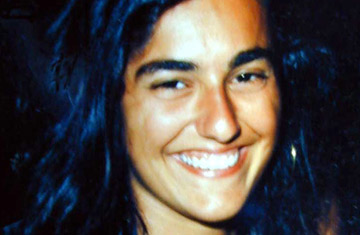
Eluana Englaro
Pope John Paul II was too ill to intervene in the case of Terri Schiavo, the comatose Florida woman who ended up at the center of a very public tussle between Christians and right-to-die activists. Those who wanted Schiavo to stay on life support would later point to the fact that the pontiff and Schiavo died within two days of each other in the spring of 2005 as a sign from above that treatment and sustenance should never be interrupted. No doubt activists on both sides of the issue will find moving symbolism in Monday evening's death, earlier than doctors had predicted, of the latest cause celebre in the battle over euthanasia and a person's right-to-die. Eluana Englaro, a 38-year-old Italian woman, who had been in a vegetative state since suffering irreversible brain damage in a car crash 17 years ago, died four days after doctors in the northern city of Udine began to cut off food and water. Her father Beppino, who had won a decade-long legal battle to carry out what the family says was the young woman's wish never to be kept alive artificially, was in a different city for yet another related court appearance at the time of his daughter's death. (See pictures of the Terri Schiavo case.)
The proximity of the Vatican to the Italian case almost ensured that Pope Benedict XVI was part of the debate over the past days and weeks. The pontiff used his annual message for the World Day of the Sick on Sunday to focus on the issue of euthanasia. "Let us pray for all the sick, especially those most seriously ill, who cannot provide for themselves in any way, but are completely dependent on the care of others," the pontiff said. It was the third time in a week that the Pope had made a not-so-subtle reference to the Englaro case. "Human life is beautiful and must be lived in its fullness even when it is weak and wrapped in the mystery of suffering."
Many expected this pope to focus on the universal Church and lofty theological treatise. But Benedict has not hesitated to step into the Italian political debate, most notably helping to bury a 2005 referendum on assisted fertility rights. The pontiff is keen to find seeds of Christian vitality in an increasingly secular Europe. And while most Italians are all but secular in their day-to-day lives, the Catholic Church and the pope's pulpit remain powerful forces in Italy's domestic politics.
Upon word of Englaro's death, the Vatican's chief of health-related issues, Cardinal Javier Lozano Barragan said: "We pray for her and ask the Lord for forgiveness for all that they did to her." Other strong words were exchanged in the Italian Senate, which had been in the throes of a passionate debate over an emergency bill introduced by Prime MinisterSilvio Berlusconi that would have forced doctors to resume life-support. When news of the death reached the Senate floor, there was a moment of silence before several Berlusconi allies began shouting: "Assassins!" Another center-right Senator, Gaetano Quagliariello, declared: "Eluana didn't die, she was killed."Sidling up to the Vatican, the country's mercurial Prime Minister weighed in heavily on the Englaro case, declaring his moral obligation to do whatever possible to "save a life in danger." Berlusconi said that if it were his daughter lying in a coma, he wouldn't cut life support. Before her death he said that he'd been told that Englaro is "hypothetically" able to bear children.
On Feb. 6 the prime minister introduced a decree that would have forced the doctors to provide full care and feeding to Englaro, but Italy's President Giorgio Napolitano refused to sign it, saying there was no evidence that the Supreme Court's final ruling on the case last year was unconstitutional.Beppino Englaro confirmed his daughter's death to reporters, and then asked to be left alone. He has insisted over the past year that the Vatican must not impose its morality on those outside the Church. As for Italy's political leaders, he had publicly invited both Berlusconi and Napolitano on Saturday to see his daughter for themselves following news reports that she was in rather robust physical shape. "Come to Udine to take full account, in person and in private, of my daughter's real condition." It was a final reminder of at least one difference from the Schiavo case: no pictures of Englaro taken after her car accident 17 years ago had ever been circulated, forever preserving for the public the image of a vibrant young woman in the prime of her life.
